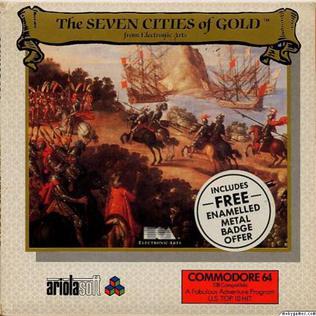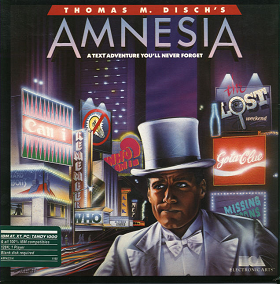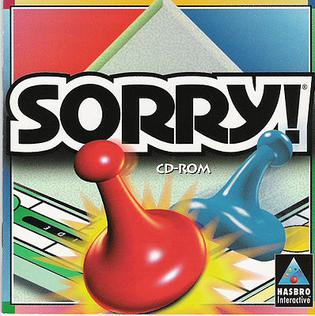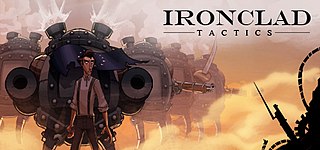
M.U.L.E. is a multiplayer video game written for Atari 8-bit computers by Ozark Softscape. Designer Danielle Bunten Berry takes advantage of the four joystick ports of the Atari 400 and 800 to allow four-player simultaneous play. Published in 1983, M.U.L.E. was one of the first five games from new company Electronic Arts, alongside Axis Assassin, Archon: The Light and the Dark, Worms?, and Hard Hat Mack. It is primarily a turn-based strategy game, but incorporates real-time elements where players compete directly as well as aspects that simulate economics.

Danielle Bunten Berry, was an American game designer and programmer, known for the 1983 game M.U.L.E., one of the first influential multiplayer video games, and 1984's The Seven Cities of Gold.
A multiplayer video game is a video game in which more than one person can play in the same game environment at the same time, either locally on the same computing system, on different computing systems via a local area network, or via a wide area network, most commonly the Internet. Multiplayer games usually require players to share a single game system or use networking technology to play together over a greater distance; players may compete against one or more human contestants, work cooperatively with a human partner to achieve a common goal, or supervise other players' activity. Due to multiplayer games allowing players to interact with other individuals, they provide an element of social communication absent from single-player games.

The Seven Cities of Gold is a strategy video game created by Danielle Bunten Berry and Ozark Softscape and published by Electronic Arts in 1984. The player takes the role of a late 15th-century explorer for the Spanish Empire, setting sail to the New World in order to explore the map and interact with the natives in order to win gold and please the Spanish court. The name derives from the "seven cities" of Quivira and Cíbola that were said to be located somewhere in the Southwest United States. It is considered to be one of the earliest open world video games.
Game balance is a branch of game design with the intention of improving gameplay and user experience by balancing difficulty and fairness. Game balance consists of adjusting rewards, challenges, and/or elements of a game to create the intended player experience.

Worms Armageddon is a 1999 turn-based strategy video game developed and published by Team17 as part of the Worms series. It was originally released for the Microsoft Windows operating system, and was later ported to the PlayStation, Dreamcast, Nintendo 64, and Game Boy Color. In the game, the player controls a team of up to eight earthworms tasked with defeating an opposing team using a wide range of weapons at their disposal. The game takes place on a destructible and customizable two-dimensional board and is characterized by cartoonish graphics and a unique brand of humour.

The Bard's Tale II: The Destiny Knight is a fantasy role-playing video game created by Interplay Productions in 1986. It is the first sequel to The Bard's Tale, and the last game of the series that was designed and programmed by Michael Cranford.

Spellbreaker is an interactive fiction video game written by Dave Lebling and published by Infocom in 1985, the third and final game in the "Enchanter Trilogy." It was released for the Amiga, Amstrad CPC, Apple II, Atari 8-bit computers, Atari ST, Commodore 64, Classic Mac OS, and MS-DOS. Infocom's nineteenth game, Spellbreaker is rated "Expert" difficulty.

Stationfall is an interactive fiction game written by Steve Meretzky and released by Infocom in 1987. It was published for the Commodore 64, Amiga, Amstrad CPC, Apple II, Atari 8-bit computers, Atari ST, and MS-DOS. The game is a sequel to Planetfall, one of Infocom's most popular games. It is Infocom's twenty-fifth game.

Master of Orion II: Battle at Antares is a 4X turn-based strategy game set in space, designed by Steve Barcia and Ken Burd, and developed by Simtex, who developed its predecessor Master of Orion and Master of Magic. The PC version was published by MicroProse in 1996, and the Macintosh version a year later by MacSoft, in partnership with MicroProse. The game has retained a large fan base, and is still played online.

Amnesia is a text adventure written by science fiction author Thomas M. Disch and programmed by Kevin Bentley. It was published by Electronic Arts in 1986 for IBM PC compatibles and Apple II. A Commodore 64 version was released in 1987. Disch's ironic, rich writing style is in distinct contrast to the functional or tongue-in-cheek tone of most text adventures. Over half of Disch's novel-length manuscript had to be cut from the published version to fit on a 5¼" floppy disk.

The Lost Files of Sherlock Holmes is an adventure game developed by Mythos Software and published by Electronic Arts for MS-DOS in 1992 and 3DO in 1994. A sequel was developed and published by the same respective companies in 1996 titled The Lost Files of Sherlock Holmes: The Case of the Rose Tattoo.

Rugrats: Scavenger Hunt is an interactive board video game developed by Realtime Associates for the Nintendo 64. It was published by THQ in 1999. The game is based on the Nickelodeon animated television series Rugrats, which aired on the network from 1991 to 2004. It features the original voices from the Rugrats cast reprising their roles as Tommy Pickles, Chuckie Finster, and Phil and Lil DeVille as well as supporting characters Grandpa Lou, Didi and Stu Pickles, Reptar, and series antagonist Angelica Pickles.

Mall Madness is a shopping themed board game released by Milton Bradley in 1988.

Sorry! is a 1998 video game based on the board game of the same name. It offers classic Sorry! and a mode called Way Sorry!, where new cards are introduced, including Bully, Buddy, Punish, and Happy. The animated pawns talk, joke, and make amusing remarks during gameplay that relate to the colors' personalities. There are cutscenes as well, which show what happens afterward when a specific color wins. Rules are identical to normal play; however there are some options for "house rules", such as being allowed to bump teammates. Both the Classic and Strategy games are available.

Dan Bunten's Modem Wars is a real-time tactics game developed by Ozark Softscape and published by Electronic Arts in 1988 for the Commodore 64. A version for IBM PC compatibles was released in 1989.

Ironclad Tactics is a strategy-based video game created by independent developer Zachtronics. The game takes place in an alternate history at the onset of the American Civil War where robot-like "ironclad" machines are used alongside human troops by both sides in the war. The game incorporates elements of collectible card games, whereby the player constructs a deck of cards earned from previous matches for the deployment, outfitting, and tactics of human and ironclad troops to achieve specific victory conditions. The game features single player and co-operative multiplayer campaign modes as well as skirmishes between two players. The game was released for Microsoft Windows, OS X, and Linux-based computers in September 2013, and later for Android devices and the PlayStation 4.
Since the origin of video games in the early 1970s, the video game industry, the players, and surrounding culture have spawned a wide range of technical and slang terms.

Xenocide is a scrolling shooter for the Apple IIGS written by Pangea Software and published by Micro Revelations in 1989. An IBM PC compatible port using VGA graphics was developed by Manley & Associates and published in 1990. The box cover credits Brian Greenstone as the game's creator on both versions. Xenocide was the first commercially published game from Greenstone's company, Panega Software.
















